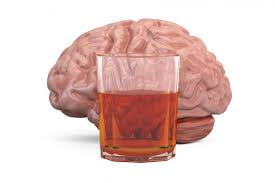 Link
Link
Ethanol is a very commonly used chemical; whether it is at home drinking a nice cold one, or filling up the tank at the gas station. Ethanol is a big part of our everyday lives.
 Link
Link
Sources:
Ethanol is also known as ethyl-alcohol because of its chemical composition.
Typically found in:
- Fuel when mixed with gasoline
- Alcoholic beverages
- Chemistry labs to wash equipment (purest form)
Ethanol is formed by fermenting different types of starch such as:
- corn
- wheat
- grain
- barley
- potatoes
Biotransformation:
Ethanols is developed from different things and can be turned to different things via biotransformation.
- External fermentation of ethanol via starches for the purpose of use or consumption.
- Internal fermentation of ethanol in the body via starches.
- Oxidation of ethanol to form acetaldehyde by NAD+
- Formation of acetic acid from acetaldehyde
Toxicokinetics:
***the rate of toxicokinetics can vary due to age, gender, weight, etc.
Absporbtion
- GI tract (small intestine) when ingested
- Lungs when inhaled
- Sometimes absorbed by the skin.
Distribution
- Ethanol is distributed equally throughout the body depending on:
- the amount of water in that area.
- blood flow to that area
- tissue mass
Metabolism:
- Via the liver
Elimination:
- Typically via breath, urine, sweat, saliva, feces, and breast milk.
Mechanism of action:
 Link
Link
-The mechanism of action of alcohol is increased production of GABA. GABA is an inhibitory neuron and CNS activity is reduced due to the inhibitory effects of GABA.
-Ethanol can also act on the reward pathways by releasing excess amounts of dopamine.
 Link
Link
Target organs:
Ethanol primarily targets the brain/central nervous system (CNS).
Signs & Symptoms:
- confusion
- vomiting
- convulsions
- respiratory depression
- hypothermia
- unconsciousness/ coma
*Alcohol poisoning can result in DEATH.
Treatments:
In less severe cases, patients will be monitored until it passes through their system.
In severe cases:
- Stomach pumping/fluid flushing
- IV fluids to help with dehydration
- Insertion of breathing tube
- Insertion of catheter
Carcinogenicity:
Research strongly shows a relationship between ethanol/alcohol consumption/exposure and cancer. It is classified as a class 1 carcinogen which is very carcinogenic to humans.
Primary types of cancer related to ethanol exposure are:
- Head and neck
- Esophageal
- Liver
- Breast
- Colorectal
 Link
Link
Genetic Susceptibility/ Heritable Traits:
Ethanol in alcohol
Abuse of Alcohol
Alcoholism
Alcoholism is heavily related to mental health disorders such as:
- depression
- anxiety
- schizophrenia
- etc.
 Link
Link
Historical/Unique Exposures:
In 1920, the United states banned all use, trade, production, etc. of alcoholic beverages. This ban was a constitutional ban referred to in the 18th amendment. In 1933, the ban on alcohol was lifted and prohibition was ended.
Biomarkers:
Production from phase II liver metabolism:
- ethyl glucuronide
- ethyl sulfate
Other:
- Phosphoatidyethanol
- fatty acid ethyl esters
Essentiality and Deficiency:
Vitamin deficiencies may increase the risk of liver damage caused by ethanol.